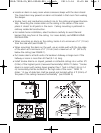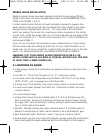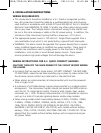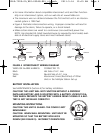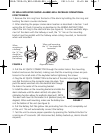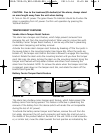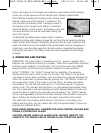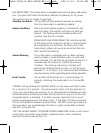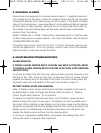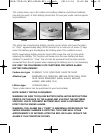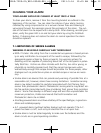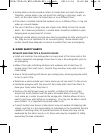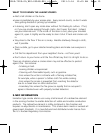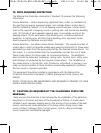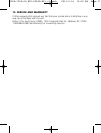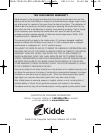10. NFPA REQUIRED PROTECTION
The National Fire Protection Association’s Standard 72 provides the following
information:
Smoke Detection – Where required by applicable laws, codes, or standards for
the specified occupancy, approved single- and multiple-station smoke alarms
shall be installed as follows: (1) In all sleeping rooms Exception: Smoke alarms
shall not be required in sleeping rooms in existing one- and two-family dwelling
units. (2) Outside of each separate sleeping area, in immediate vicinity of the
sleeping rooms. (3) On each level of the dwelling unit, including basements
Exception: In existing one- and two-family dwelling units, approved smoke
alarms powered by batteries are permitted.
Smoke Detection – Are More Smoke Alarms Desirable? The required number of
smoke alarms might not provide reliable early warning protection for those areas
separated by a door from the areas protected by the required smoke alarms. For
this reason, it is recommended that the householder consider the use of addi-
tional smoke alarms for those areas for increased protection. The additional
areas include the basement, bedrooms, dining room, furnace room, utility room,
and hallways not protected by the required smoke alarms. The installation of
the smoke alarms in the kitchen, attic (finished or unfinished), or garage is nor-
mally not recommended, as these locations occasionally experience conditions
that can result in improper operation.
This equipment should be installed in accordance with the National Fire
Protection Association’s Standard 72 (NFPA, Batterymarch Park, Quincy, MA
02269).
NOTIFY YOUR LOCAL FIRE DEPARTMENT AND INSURANCE COMPANY OF YOUR
SMOKE ALARM INSTALLATION.
11. CAUTION (AS REQUIRED BY THE CALIFORNIA STATE FIRE
MARSHAL)
“Early warning fire detection is best achieved by the installation of fire detection
equipment in all rooms and areas of the household as follows. A smoke alarm
installed in each separate sleeping area (in the vicinity of, but outside of the bed-
rooms), and heat or smoke detectors in the living rooms, dining rooms, bed-
rooms, kitchens, hallways, attics, furnace rooms, closets, utility and storage
rooms, basements and attached garages.”
1260-7205-01(820-0394G-EN)_v1.qxd:_ 2011.5.16 10:15 AM Page 16



